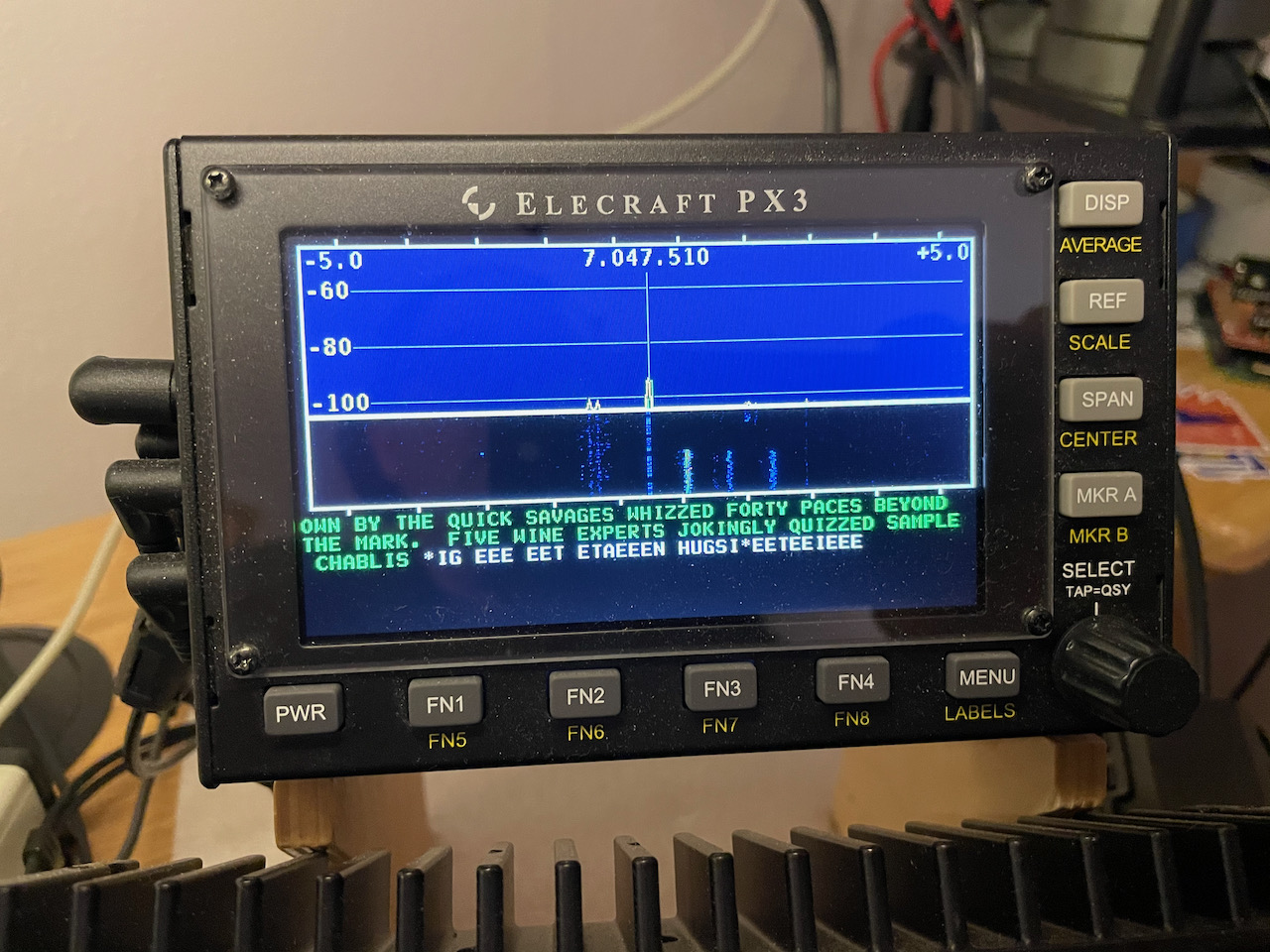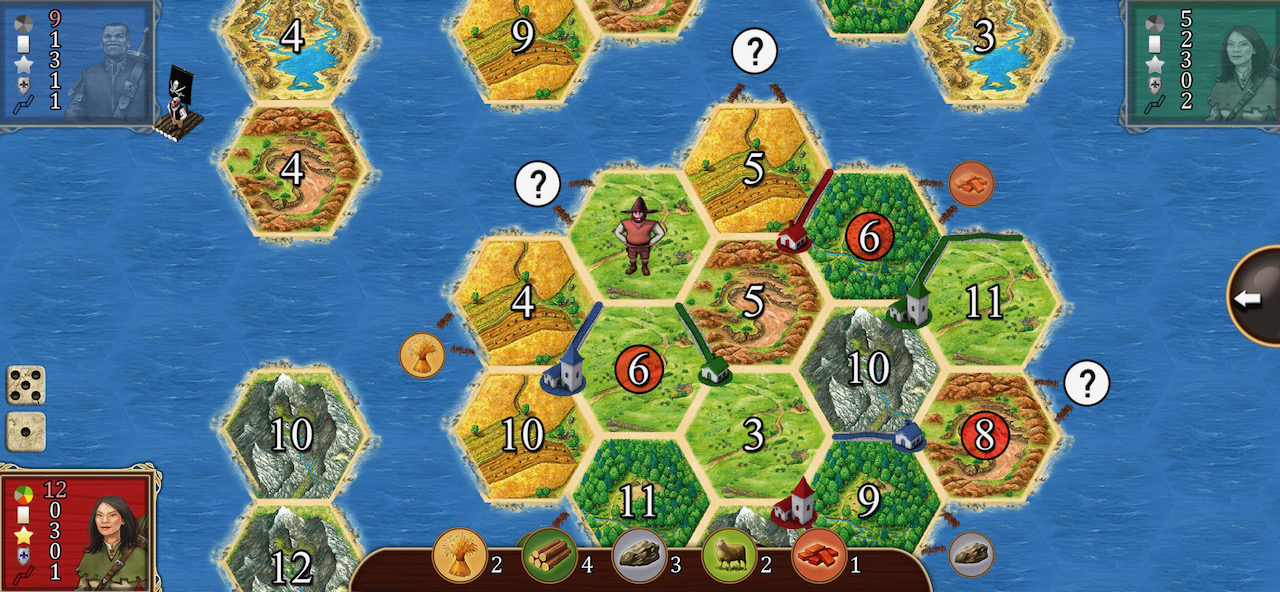For Session 8 sending in class: What are your three most valued (to you) household appliances and/or power tools? (e.g., KitchenAid mixer, coffee grinder, and cordless drill)
This weekend are two additional possible contact events for QSOs:
1) CQ Magazine World-Wide CW sprint on 160m – The exchange is simply a signal report of 5NN and your state. Based on my hour last night, there were a lot of potential CA and WA contacts. (I could hear a few AZ/UT, but they could not hear me, which is a summary of my experience on 160m.) Look from 1.81 – 1.90 MHz.
2) Winter Field Day – starts at 11 a.m. Saturday. The exchange is For CW: 1.81, 3.53, 7.030 – 7.05, 14.035 – 14.055, 21.030 – 21.05 and 28.03 – 28.04 MHz. (But since it’s field day, try other modes.)
If you chase points, you can earn 6004 points for a satellite QSO from a park, using a battery powered handheld. Otherwise, RTTY and CW QSOs are 2 points each, phone 1 point each.
For Session 9 sending next class: In celebration of the arrival of 4-letter words, speed jumping to 8 (4 x 2) and being past the halfway point (2/4ths): What are four of your favorite (PG-14) four-letter words?
Nearly every weekend over the next several months has some kind of CW contesting event. In addition to SST, there are four other CW events this weekend:
- Minnesota QSO Party: 1400 – 2359z Feb 6; exchange is your first name and state, Minnesota station send first name and three-letter county. I list this one first because there are a lot of great operators in MN and it’s about the right distance to make contacts on the higher bands.
- British Columbia QSO Party: 1600Z, Feb 6 to 0359Z, Feb 7 and 1600Z-2359Z, Feb 7, exchange is 5NN and your state, BC operators send 5NN and three-letter district.
- Vermont QSO Party 0000z Feb 6 – 2359z Feb 7. exchange is 5NN and your state. Vermont stations send 5NN and their county. Vermont is always a tough state for me to reach. There is a larger “13 Colonies” event the first week of July.
- European DX contest 1800z Feb 6 – 1759z Feb 7. Exchange is 5NN and ITU zone, Europeans send 5NN and EU region (see section 4 here).
Session 10 ups the speed to 9 and has 1-5 letter words.

For Session 10 sending in class: we’ll do pangrams, a sentence that uses all letters in the alphabet. There are some examples here and in the attached file (from various sources on the Interwebs). A near-pangram (all but one or letters) is also acceptable. For example, there was a geocachingpuzzle whose keyword was revealed by the absence of a specific letter from each line:
How quickly daft zebras jump vexed giraffes.
Crazy Frederika bought very exquisite opaline jewels.
Sixty zippers were quickly plucked from the big woven jersey.
Jackdaws love my toy sphinx of black quartz.
The five boxing wizards judge men quickly.
Blue gods just flocked up to wanly quiz and vex him.
Pick my box with five dozen liquor jugs.
While doing Winter Field Day, I wrote a tutorial on setting up N1MM+ (Here’s another for CWOPs’ CWT.) I am in no way an expert on this program, so if you have experience with this, please share with the group. When class is over, I can show a sample demo for a state QSO party or K1USN.
Like most ham software, N1MM+ initially looks as impenetrable as Cubists designed web sites, but once you’re past some of the learning curve, it can help automate many rote tasks when working a contest or event. Among the things it does well:
- Tracking scoring of specific contests, especially multipliers. For example, during Winter Field Day, your score increases a lot for each band & mode you work. (N3FJP solves this by offering separate, straightforward programs for each event.) It can apparently deal with concurrent events (e.g., 7QP, New England QP, Indiana QP on May 1st weekend), letting you focus on the radio work.
- Generating Cabrillo files. Cabrillo format is the de facto type of documentation required for contests and events because they’ll attempt to match up what you claim you did against what other people did. It’s different from logging.
- Exporting ADIF files – these are used by your logging program, and you can upload to LoTW/QRZ/eQSL.
- Spotting via a reverse beacon network.
- Macros – with some radios, you can set function keys to call CQ, for example, reducing the fatigue of operating for a long period (over 20 minutes for me).
A typical contest pattern might be:
- Set up N1MM+ for the event.
- Work a bunch of stations. I take lots of breaks, sometimes check other bands if it’s quiet.
- Generate the Cabrillo log and upload/email it as an attachment, per the rules of the contest.
- Export an ADIF file that I then import into n3fjp (Windows) and MacLoggerDX (Mac).
- Use my logging program to upload the new contacts to LoTW/eQSL and QRZ.
